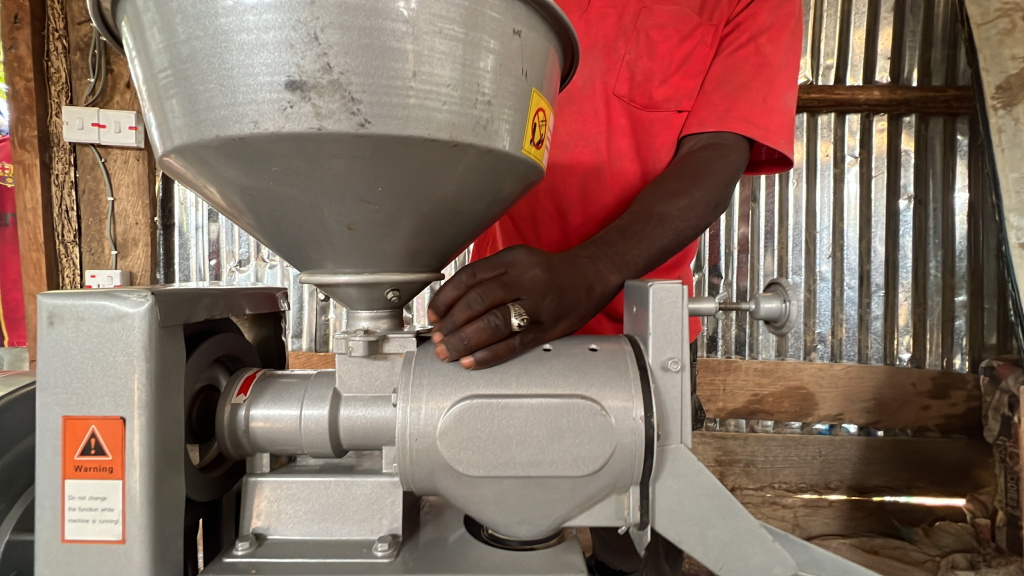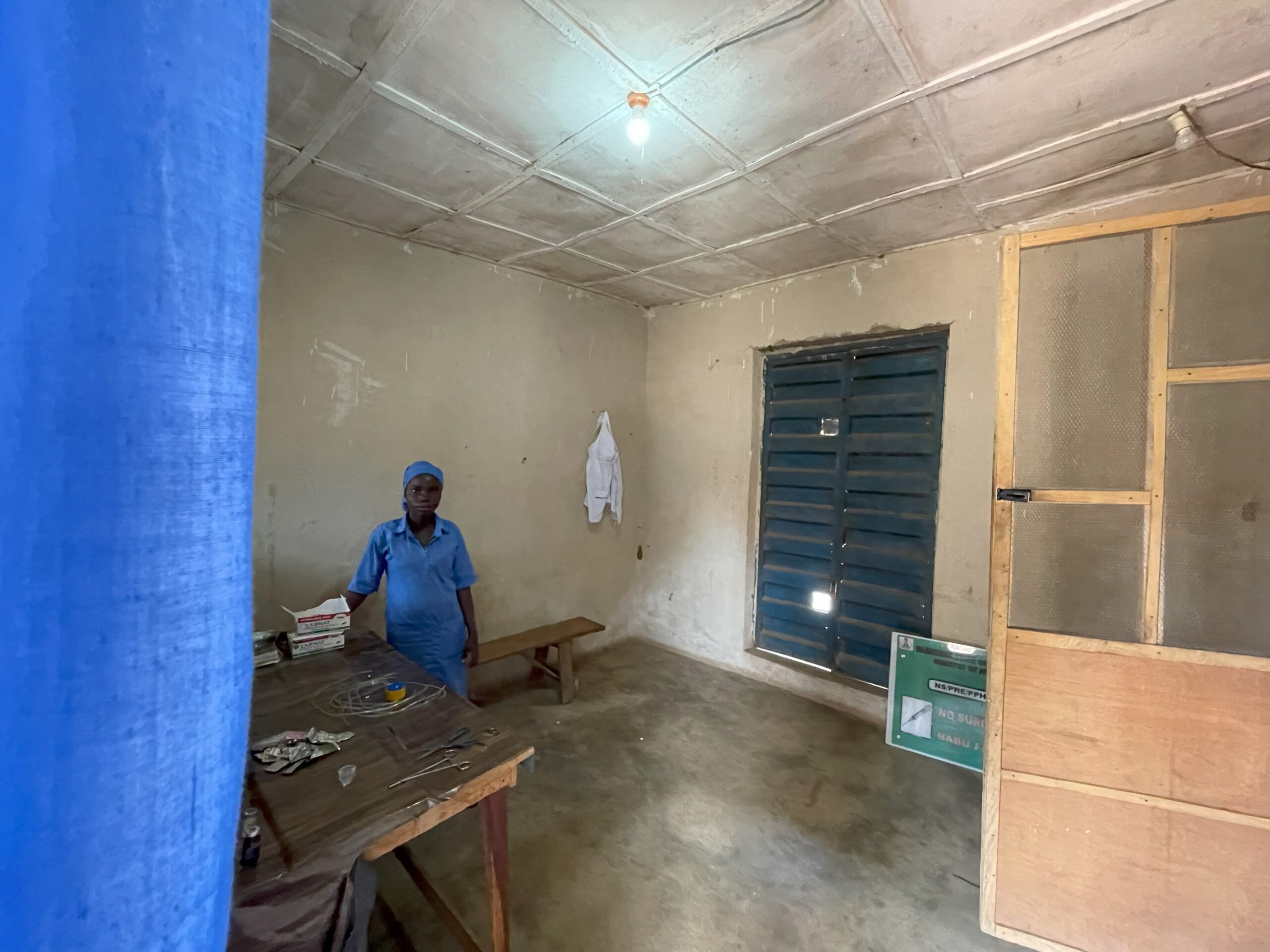The solar lantern is a revolutionary piece of technology.
Operating with a small in-built solar panel, connected to a battery and using an LED light bulb, it can transform how rural communities see the world.
Its use in places without access to mains electricity has taken off in the past 15 years, alongside the wider growth in solar power around the world.
An estimated 600 million people in sub-Saharan Africa still live without reliable access to electricity, according to the World Bank. The introduction of solar power – coupled with energy-efficient lighting – is key in tackling this problem.
Many villages not served by national grids are forced to use kerosene lamps and candles, or burn straw in the evening, which is costly and dangerous to human health. London-based think-tank ODI Global estimates that low-income households in Africa spend US$6.5 billion a year on such inefficient lighting options.
Solar power changes the equation, allowing streets to be lit, children to study at night, and a sense of security to exist. Greater electricity access enables farmers to work an extended day and use solar-powered irrigation and cooling systems to grow and process their crops.
African leaders seek investments in ailing grid infrastructure to achieve energy goals
“Reliable and affordable energy creates economic transformation,” said Eva Roig, a spokesperson for GOGLA, an Amsterdam-based trade body for the off-grid solar energy industry. The organisation estimates that US$9 billion in additional income has already been created by businesses as a result of switching to solar in place of fossil fuel alternatives.
“In off-grid locations, lack of energy restrains farmers from higher productivity and, with a growing young population, offers few employment opportunities or possibilities to create new businesses,” she added.
The challenge for off-grid solar power is to reach the hundreds of millions of people in need and create a stable market for its continuance.
Electric power key to tackling poverty
UK charity SolarAid was founded in 2006 with the aim of creating a world “where everyone has access to clean, renewable energy” and eradicating the use of kerosene lamps in Africa.
A couple of years later it set up SunnyMoney, a social enterprise which uses a community distribution model to raise awareness and increase demand for solar power. Local teachers explain how the technology works and independent agents sell the products. SunnyMoney supports them with logistics, training and engagement along the way.
“We believe that access to electricity is fundamental in the fight against poverty. Access to solar lighting and power means that families are saving money, extending productive hours, increasing access to study hours and also increasing safety,” explained John Keane, CEO at SolarAid, based in Zambia.
The charity has reportedly helped 12 million people through the social enterprise, with projects in Senegal, Uganda, Tanzania, Kenya, Zambia and Malawi.
While models such as SunnyMoney can stoke the solar market, larger businesses need to step in and supply the kit itself. D.light is one of the solar companies that has done more than most to bring affordable solar power to some of the remotest villages in Africa.
Finance for renewable energy in sub-Saharan Africa is defying the odds
The US company is deeply embedded across the continent, with a vision to make solar products accessible to low-income families. The business had one of its most successful years in 2024, and says it reached 24 million people with solar systems last year alone.
But it hasn’t always been plain sailing. “I don’t think we realised how difficult it would be to commercialise and scale off-grid solar products,” d.light’s founder and CEO, Nedjip Tozun, commented in an interview last year.
While its products now power around 32 million homes, building that capacity took time, patience and good fortune. Tozun explained that during the early years in the mid 2000s the difficulties lay in building a high-quality product which could be distributed to remote areas and with financing to enable people to pay for it. The company was forced to create those capabilities in-house in order to scale and overcome external barriers.
Funding energy efficiency to expand use
Improving energy efficiency is one such challenge the off-grid industry has sought to solve. Solar devices need to hold the sun’s energy long enough to be used for a wide range of purposes. This is where LED lighting comes in.
“Over the past 10 years, the growing availability of increasingly energy-efficient appliances, such as LED lighting is transforming what’s possible,” said Keane. “It’s the foundation for designing inclusive solutions that deliver long-term impact.”
The main benefits, he explained, is that LED lighting drastically reduces the amount of electricity needed to light homes, enabling households on lower incomes to meet their essential needs with small solar systems.
As off-grid solar kits are small by design, using the power with efficient lighting or low-voltage appliances, such as refrigerators, means the energy goes further and is matched to the user’s needs.
Pairing solar with technologies to support economic activity, so-called “productive use”, is a growing area within the industry. Solar can be applied in a range of commercial settings, and on any number of appliances, from sewing machines to water pumps, or from seed pressers to ceiling fans. But to do so effectively those appliances need to be energy-efficient and upgrading is expensive.


New financing initiatives such as PUFF – the Productive Use Financing Facility – are playing a role by offering subsidies to suppliers to help bring down the costs for farmers and businesses. After a successful pilot, the scheme was recently extended with an additional US$6.1 million to support access to 10,000 “high-impact” appliances, according to CLASP, a non-profit which started the initiative.
“Efficient appliances and equipment turn energy into opportunity and should be considered essential energy infrastructure, alongside renewables,” commented Emmanuel Aziebor, a senior director at CLASP, in a media statement.
Financial barriers to adoption
Overall, the coming together of small solar technology, LED lighting and socially minded businesses has grown the market significantly over the past decade.
In Kenya, off-grid solar now accounts for an estimated 75% of rural electricity access. The country has a target to reach universal access by 2030 and solar plays a big part in the government’s plans.
But the same barriers to scaling the market remain. Despite the success of using mobile technology and pay-as-you-go models to spread out costs for the consumer, affordable solar products are still out of reach for many. Research from ESMAP, an energy programme run by the World Bank, found that only 22% of households that lack electricity globally could afford the monthly payment to access a basic solar lantern and home system able to provide power for at least four hours a day.
“Governments should fully integrate off-grid solar into their national energy plans and programmes,” said Roig of GOGLA, adding that incentives such as tax breaks, subsidies and public-private partnerships are needed to reach the poorest households.
Making solar affordable for all
One way to bring down costs for consumers is to de-risk investments for solar power producers. The Beyond Grid for Zambia pilot project sought to do exactly that by providing financing to companies on a per-connection basis.
The project, which ran from 2016 to 2022, also worked with the Zambian government to smooth market access, such as providing a VAT exemption for LED lights. The successful results – with over 194,000 households fitted with off-grid solar – have led to ambitious plans to scale the project across the whole African continent.
The remoteness of many villages makes repairing and maintaining solar kits another challenge. Collecting, servicing and replacing these products can be expensive for companies. Research from SolarAid suggests that while manufacturers agree that repair work needs to improve, it remains an ambition for many.


Among the possible solutions include extending warranty times, providing technical training in-country, and greater guidance on how to conduct repairs at the community level. SunnyMoney already provides technicians with its own mobile repair app, which could be expanded and used as a template for manufacturers.
Despite the challenges, the work to reach tens of millions of remote households is being reinforced and stepped up. SolarAid is midway through a pilot project to connect TA Kasakula, a village in rural Malawi where almost all residents live in extreme poverty. The project is trialling a new financing model which eliminates upfront costs, with customers only paying for the electricity they use.
The stories coming back to the social enterprise are of revelation and changed lives. “When we switched on the lights, some children were dancing, jumping,” reported Goodwill Kongalwa. “Then everyone rushed to where there were books because they saw they had a chance to study at home.”
Adam Wentworth is a freelance writer based in Brighton, UK.
The post How off-grid solar is beating the odds to transform lives in rural Africa appeared first on Climate Home News.
How off-grid solar is beating the odds to transform lives in rural Africa
Climate Change
AI is Decoding Whales’ Language. Could That Be a Turning Point in the Push for Their Rights?
The Cetacean Translation Initiative (CETI) is using artificial intelligence to help understand sperm whale communications. Lawyers think the discoveries could galvanize the world to recognize whales’ legal rights.
For centuries, humans have drawn a line between themselves and other species, initially claiming that other animals couldn’t feel pain. Science proved they could. Then the argument shifted: Animals lacked consciousness or the ability to think in complex ways. That, too, fell apart under mounting evidence. Now, a final frontier is language—the belief that only humans possess it.
Even that line is beginning to blur.
With the help of artificial intelligence, robotics and new recording technologies, scientists are edging closer to decoding the vocalizations of elephants, whales and other animahttps://insideclimatenews.org/news/29102025/ai-sperm-whale-communications-legal-rights/
Climate Change
In a ‘Disheartening’ Era, the Nation’s Former Top Mining Regulator Speaks Out
Joe Pizarchik, who led the federal Office of Surface Mining Reclamation and Enforcement from 2009 to 2017, says Alabama’s move in the wake of a fatal 2024 home explosion increases risks to residents living atop “gassy” coal mines.
Joe Pizarchik knows mining.
In a ‘Disheartening’ Era, the Nation’s Former Top Mining Regulator Speaks Out
Climate Change
‘Millions of Avoidable Deaths’: Climate Change Health Harms Reach Unprecedented Levels
Global researchers find that public awareness of climate threats is growing, but governments and companies are reversing climate progress and missing opportunities to save lives.
Heat waves, extreme drought and deadly wildfire smoke are just some of the climate-related health hazards that have reached record levels of harm, according to the latest report from a global collaboration of leading scientists and public health professionals.
‘Millions of Avoidable Deaths’: Climate Change Health Harms Reach Unprecedented Levels
-
Climate Change2 years ago
Spanish-language misinformation on renewable energy spreads online, report shows
-
Climate Change3 months ago
Guest post: Why China is still building new coal – and when it might stop
-
Climate Change Videos2 years ago
The toxic gas flares fuelling Nigeria’s climate change – BBC News
-

 Greenhouse Gases1 year ago
Greenhouse Gases1 year ago嘉宾来稿:满足中国增长的用电需求 光伏加储能“比新建煤电更实惠”
-
Greenhouse Gases3 months ago
Guest post: Why China is still building new coal – and when it might stop
-

 Climate Change1 year ago
Climate Change1 year ago嘉宾来稿:满足中国增长的用电需求 光伏加储能“比新建煤电更实惠”
-

 Carbon Footprint2 years ago
Carbon Footprint2 years agoUS SEC’s Climate Disclosure Rules Spur Renewed Interest in Carbon Credits
-
Renewable Energy4 months ago
US Grid Strain, Possible Allete Sale



